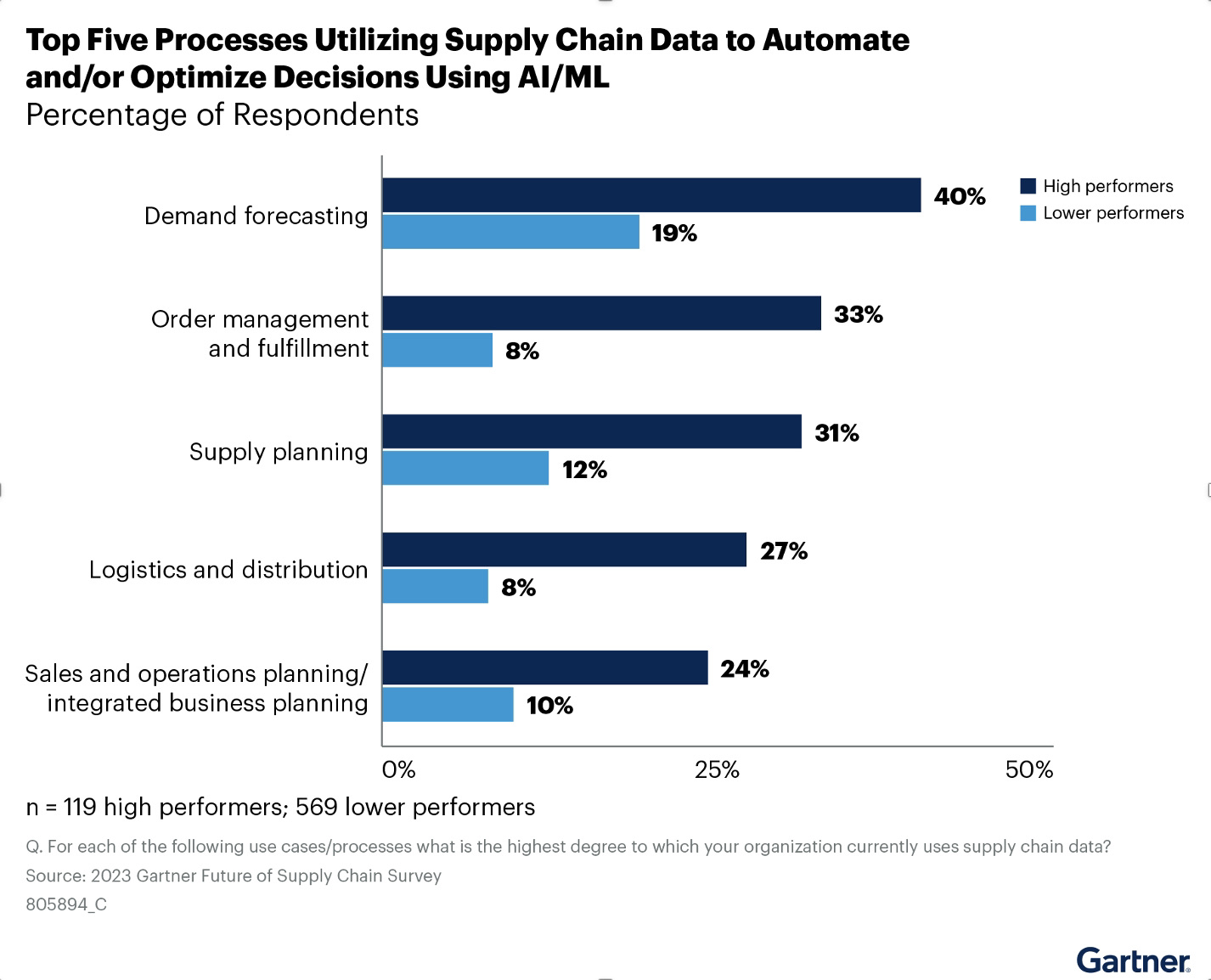Gartner: top companies use AI to rapidly optimize processes

The best-performing supply chain organizations are investing in artificial intelligence (AI) and machine learning (ML) to optimize their processes at a rapid pace. The pace is even more than double that of low-performing peers, according to research by analyst firm Gartner. It also revealed that these top performers have productivity as their main focus to maintain business momentum.
Gartner surveyed 818 people working in the supply chain from different geographical areas and industries. The aim was to find out how the chain is adapting to changes in economic values, driving sustainable growth, harnessing the potential of digital assets to increase productivity, and revitalizing the workforce and network of people.
Different focus for investment decisions
“Supply chain organizations that are top performers make investment decisions with a different focus than their lower-performing peers,” states Ken Chadwick, VP Analyst at Gartner. “Improving productivity is the most important factor for future success. The key to that lies in leveraging intangibles.” He says the differences are particularly visible in the digital domain, where the best organizations are far ahead in creating value by optimizing their supply chain data using AI/ML applications.
The study assessed organizations on five key criteria that measure business and workforce outcomes to determine their level of performance. One of the key findings, as Chadwick said, was that high-performing organizations have a strong lead in using AI/ML to automate and/or optimize processes that make use of supply chain data (see figure below). ‘High-performing organizations’ were those that reported that their performance in the past 12 months exceeded expectations in terms of the five metrics of supply chain performance.
Value from intangible assets
The difference between high and low-performing companies in using AI/ML to optimize processes indicates a larger gap in organizational strategies, according to Gartner. The best-performing organizations are increasingly prioritizing extracting value from their digital assets to increase productivity, rather than making digital investments to achieve efficiencies such as cost savings.
The top performers are further ahead with implementation than the underperforming organizations across all of the top five digital investments expected to deliver value. These are:
• Collaborating with IT to set up data security mechanisms (74% vs 61%)
• Establishing ethical and binding data privacy frameworks regarding the use of customer data (68% vs 50%)
• Including cyber security measures in contracts with suppliers and staff (66% vs 57%)
• Capturing supply chain-specific customer satisfaction data (58% vs 40%)
• Analysing and using supply chain-specific data on customer usage and satisfaction (57% vs 35%)”
“Capturing, protecting and subsequently leveraging an organization’s data through the use of AI/ML is an example of how they are increasingly turning to intangible assets to mine new sources of value,” says Chadwick. “High-performing organizations quickly move from the initial implementation phase to full adoption. This results in better decision-making that taps into new sources of value.”
Similar trends
Gartner found similar trends in how the best-performing supply chain organizations are extracting intangible value from their investments in people and resources. According to Chadwick, rapid technological advances are pushing organizations to upskill their talents, with investments in training and development needed to reap the full benefits of these digital investments.
In managing resource investments, the best-performing organizations had a big advantage in working with suppliers to maintain consistency. They also often worked exclusively with suppliers that have their own risk controls. These characteristics are typical of organizations that have achieved better supplier visibility through the use of mature data and analytics capabilities.











